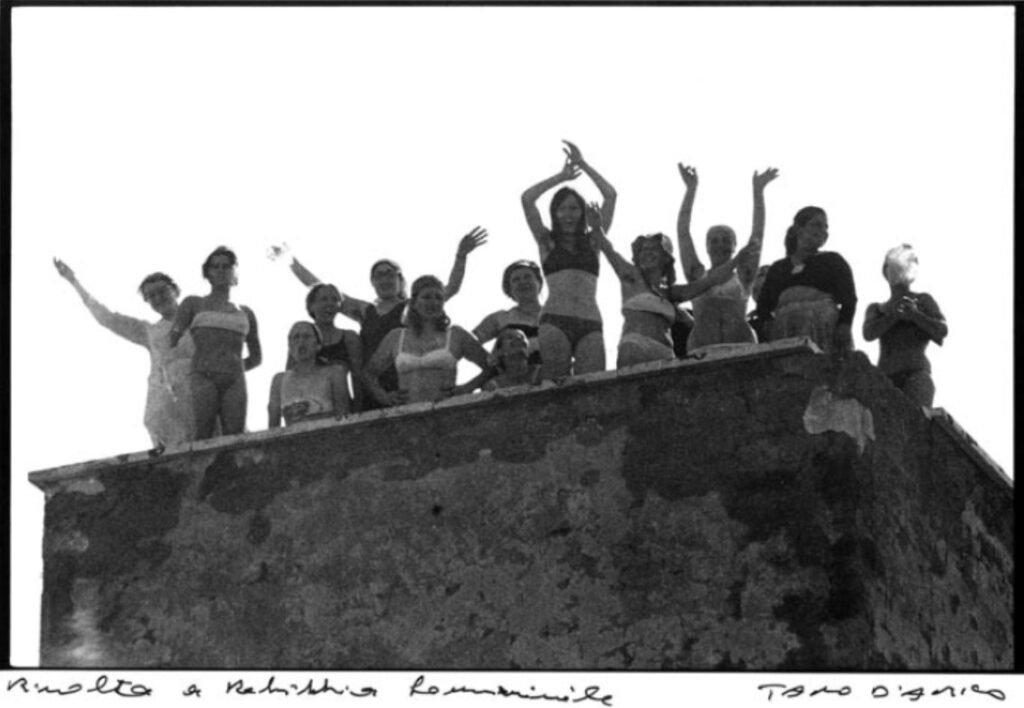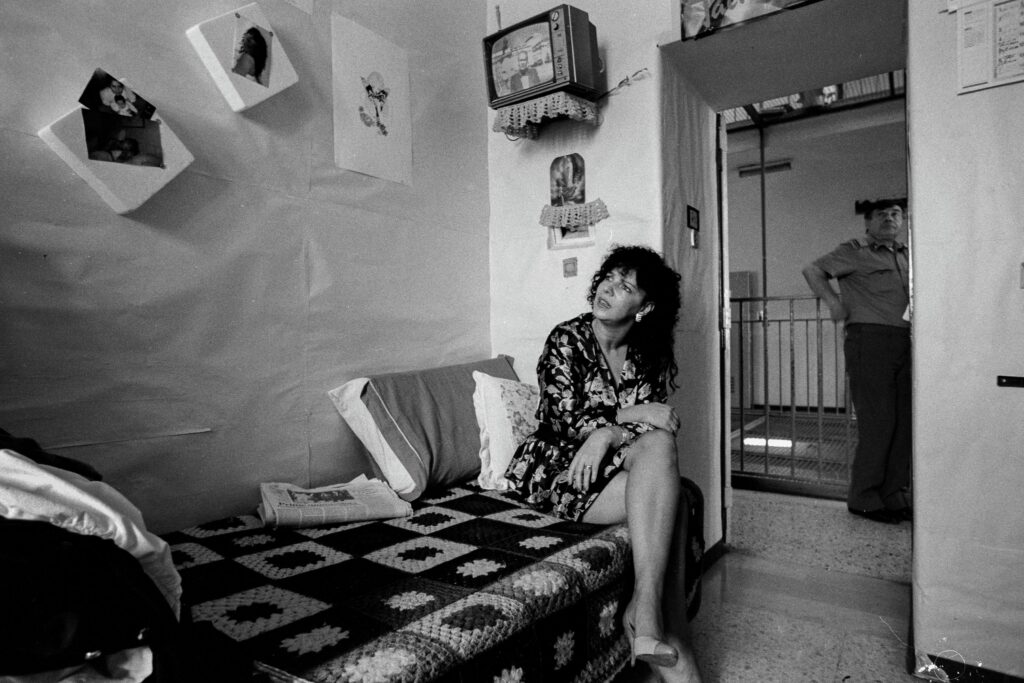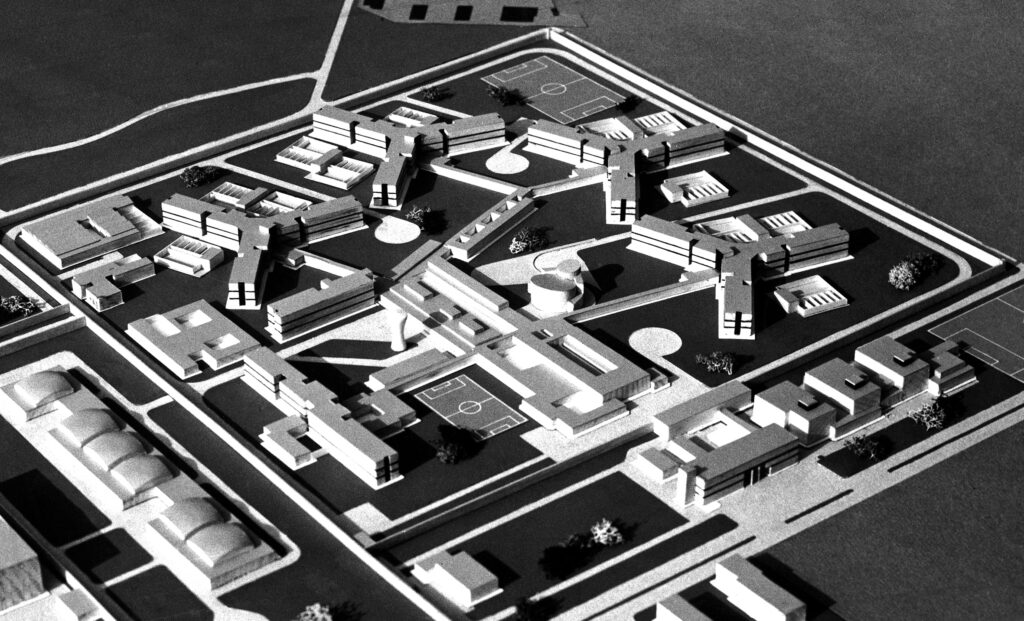Rebibbia (Rome)

“In images, more than in words, we must look for the stories of the defeated.”
“Camera Oscura” was a photographic project by Tano D’Amico occurred in Rebibbia. One of the few that let the detainee shoot their own photos. It was a way to overturn photography’s usual role from an instrument of control and transform it into a space of shared freedom, and above all, a way to bridge, or at least narrow, the distance from the outside. As some participants wrote years later: “Since we do not wish anyone to have to come and visit us here, we prefer to reach you ourselves through our images.”
Written by Silvia Basile

“No Flowers for the Brides.”
How does a wedding happen in prison? Isabella De Silvestro tells the story of Tiziana, a woman who attended two weddings, one as a guest and the other as the bride, during the 1980s, when they were all political prisoners in Rebibbia.
Written by Isabella De Silvestro

“On earth, there’s church and there’s prison. If you go to church, you go to heaven. If you go to prison, you go to hell.”
In early ’90s Rebibbia, three lives crossed: Princesa (Fernanda Farias de Albuquerque), a trans woman from Brazil; Giovanni, a Sardinian lifer; and Maurizio, ex-Brigate Rosse. Their secret letters became the novel Princesa, an act of liberation that lingers on her experiences of desire, sex, and self, while suggesting a historical passing from political struggle to identity struggle.
Written by Elisa Cuter

“I wanted the second Holy Door to be here, in a prison.”
Pope Francis died in prison. He entered Rebibbia, fell into a coma, and died. It gave meaning to his mission. For the first time in history, a pontiff opened a Holy Door inside a penitentiary. Francis himself said that on that occasion, for one day, Rebibbia became a basilica: “I opened the first Holy Door at Christmas in St Peter’s, but I wanted the second Holy Door to be here, in a prison. I wanted each of us here, inside and outside, to have the chance to fling open the doors of our hearts and understand that hope does not disappoint.”
Written by Christian Raimo and Giulio Pecci

“In the end, the reward I expected in return for the wrong I had suffered was impossible.”
Sergio Lenci was the architect of the New Rebibbia Penitentiary Complex. A visionary modernist, attentive to social issues and to the living conditions of inmates, he became the victim of an attempted assassination by a group of Brigatisti in the 1970s. From that day and for the rest of his life, Sergio devoted himself to understanding the reasons behind the attack. The story of the new Rebibbia begins in this way: in armed struggle, in the internal conflict within the architectural instrument, and in reflection on the idea of forgiveness.
Written by Nicola Gerundino

Inside Out
Check this excerpt: Prison is a country most people never come to know. You don’t set out for it; you end up there, often without quite realising how. No one chooses it, but who lives in it? These are the stories of Rebibbia. The stories of 17 people—a small group who resemble, however, the many who inhabit all these countries where you end up without ever wanting to.
Written by Isabella De Silvestro; Federica Delogu; Nicola Gerundino; Giulio Pecci.

An Upside-Down World: Inside Rome’s Rebibbia Penitentiary Complex
Rebibbia is a “neighborhood that doesn’t exist”: a prison suspended between maps and walls, visibility and invisibility. Hyperlocal explores the shared ground between the district and its prison, two mirrored worlds that surface only in brief flashes of attention before returning to silence, revealing stories, voices, and reflections on justice, time, and coexistence—told directly by inmates and through original narratives that position Rebibbia Prison itself as a central subject.
Written by Nicola Gerundino